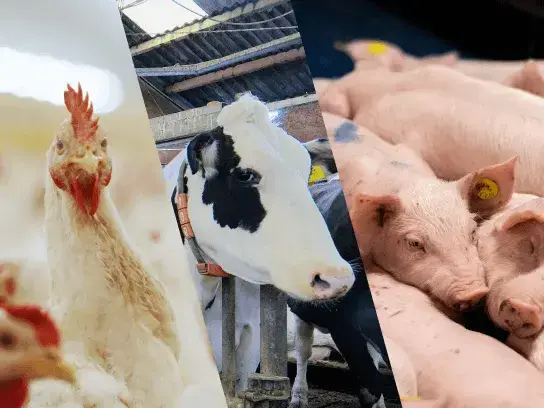- Poultry
- Laying Hens
- 2 minutes read
At HATO, we strive to enhance hen well-being, behaviours and productivity through well-researched lighting solutions. One area of our focus is 'light flicker'. Light flicker is characterized by quick, recurrent variations in the light output from a lamp. It's like a rapid series of 'on-off' cycles that can vary in frequency and intensity.
Light flicker is assumed to significantly influence hen well-being and productivity. Our research department did a study on this. The results? Keep reading…
The Study
Our study compared two identical aviary houses, both housing brown laying hens, with similar lighting. The main difference was the flicker index of the lamps. CORAX DDS: 0.00 and the other lamp: 0.66.

Our goal was to determine whether the use of flicker-free lighting could improve egg production, reduce the mortality rate and reduce feather pecking. In this blog, we’ll focus on the mortality rate and feather pecking.
Lower Laying Hen Mortality Rate
 Flicker-free lighting reduces mortality, as you can see in figure 1. Despite comparable cumulative mortality rates after 67 weeks - 5.6% in the flicker-free house and 5.1% in the flickering one - our study revealed that the flicker-free house consistently maintained a lower mortality rate until week 60. There was an unexplained increase in week 60, but the overall trend indicates that flicker-free lighting could significantly reduce the mortality rate. This implies a less stressful environment.
Flicker-free lighting reduces mortality, as you can see in figure 1. Despite comparable cumulative mortality rates after 67 weeks - 5.6% in the flicker-free house and 5.1% in the flickering one - our study revealed that the flicker-free house consistently maintained a lower mortality rate until week 60. There was an unexplained increase in week 60, but the overall trend indicates that flicker-free lighting could significantly reduce the mortality rate. This implies a less stressful environment.
Higher egg production & profits
One major finding of our research is that egg production and profits were significantly higher in the flicker-free house. More data on this can be found in our research paper. You can download it for free!
Less feather pecking?
Interestingly, there were no noticeable differences in feather pecking or pecking scores between the two houses. However, the house with flicker-free lighting didn't need to reduce light intensity to the same level as the flickering house to maintain comparable levels of feather pecking. This observation is intriguing since dimming lights is a widely accepted method to reduce feather pecking.

Conclusion
Our study highlighted flicker-free lighting its potential in decreasing the mortality rate in laying hens. However, it didn't find a direct impact of flicker-free lighting on feather pecking (besides being able to use a higher light intensity). Another interesting observation is that flicker-free lighting increases egg production and profits.
Download our research paper today to learn everything you want to know about this research and the results. It’s free!
Stay informed
Lighting matters. That's why we share our knowledge with the world through HATO Insights.
Pigs
Collaboration: How HATO Lighting and Optifarm Are Shaping the Future of Livestock
In modern livestock farming, success is no longer just about feed and shelter but about precision, insight, and care. That’s why HATO Lighting and Optifarm...
Pigs
How Optifarm is Transforming Livestock Farming with AI
In a world where agriculture is rapidly evolving, Optifarm stands out as a pioneer - bridging the gap between traditional farming and cutting-edge technology....
At HATO, we think high-quality lighting solutions, designed to enhance animal welfare and livestock production, must be accessible and affordable for all farmers.
Success Stories
Five Years, Zero Replacements: Why CORAX Is George Navaro’s Lighting of Choice
Herman Kusters: I would definitely recommend RUDAX

.webp)
.webp)
